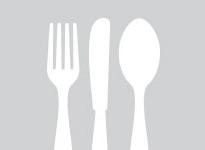You are here
NYT: If There's Smoke, There's a Bartender

February 16, 2012
If There’sSmoke, There’s a Bartender
By Robert Simonson
Published: February 14, 2012
ON a recent episode of the satirical IFC show “Portlandia,” a preeningmixologist creates an over-the-top cocktail with egg shells, a rotten bananaand “charred ice.”
Good joke, but not completely absurd. Charred ice has not been spotted inany mixing tins, but smoked ice cubes are falling into cocktails in Boston,California and, yes, Portland, Ore.
Mixologists have been using mezcals and peaty Scotches to slip a littlesmoky flavor into their potions for some years. But today many bartenders willsettle for nothing less than actual smoke.
At Craftbarin Manhattan, the beverage director, Hayden Felice, is smoking the Campari inthe house Negroni. For the Smoked Sicilian Manhattan at the Bristol, in Chicago, bourbon is given a cherry-woodtreatment. At Rogue 24, R. J. Cooper’srestaurant in Washington, D.C., the mixologist Derek Brown pumps cassia-barkfumes into a blend of mezcal, maple syrup and maple bitters called WhereThere’s Mezcal. And the Smoky Margarita at Bottega in Yountville,Calif., has no less than three sources of smoke: smoked tequila, smoked jalapeño simple syrupand oak-smoked salt on the rim.
Sound a bit byzantine? It gets better. At Mr. Brown’s Columbia Room in Washington, a newdrink called Ghost Dance gets going when aromatic sweetgrass (also called bisongrass) and a star anise pod are set smoldering under an upturned glass. Afterthe vessel has been thoroughly “rinsed” with the vapors, this Sazerac variationis completed with Calvados, Fernet-Branca and simple syrup.
But even that process takes a back seat to the Smoker’s Delight, served atTodd Thrasher’s bar PX inAlexandria, Va. Mr. Thrasher takes three or four different kinds of tobacco,steeps them in hot water for five minutes, strains it, adds sugar and reducesthe mixture. He mixes a few drops of this with bourbon, honey syrup and lemonjuice. Mr. Thrasher created the cocktail for his business partner, who had justquit smoking.
“I think it adds another nuance of flavor,” Mr. Thrasher said. “Smoke hasalways been in food. In cocktails, unless you used mezcals and Scotches, youdon’t get it. It’s me trying to move beyond really sweet and really drycocktails.”
There are as many ways to deliver embers to alcohol as there are woods toburn. The most common tool (and the simplest method) is the smoke gun. Stuffwood chips in the device’s chamber, light them, and the smoke snakes through atube to its desired target.
This is how Amber Johannson, at MistralKitchen in Seattle, treats the bourbon for the Courting Rachel, her take on anOld-Fashioned. After filling a decanter with smoke, she chases it with themixed drink, then pours the result over rocks.
Craftbar has a smoker in the restaurant, which Mr. Felice uses to givenear-frozen Campari an hourlong apple-wood singe. For their Mexican Pianococktail, Tim Zohn and Ethan Terry at AQ in SanFrancisco take a blowtorch to a bay leaf and immediately pour ice over it totrap the smoke in the glass. They then pour in the cocktail, a mix of tequila,lime juice and huckleberry-tarragon syrup.
For customers, the appeal of these drinks may go beyond flavor to somethingmore subliminal.
“The first thing you think about is camping,” said Mr. Brown, themixologist. “It has an emotional impact.”
Eben Freeman, the director of bar operations and innovation at the Altamarea Group, is familiar with thenotion.
“I’m sure that people will argue it’s some sort of caveman reaction,” hesaid. “That sense-memory thing is part of its appeal. I think it’s also amatter of the American palate, which has changed and is on such a fast learningcurve. You overload that palate, so you need stronger and stronger flavorexperiences.”
Mr. Freeman should know. Those smoke signals bartenders are reading canarguably be traced back to Tailor,the bygone SoHo restaurant where Mr. Freeman was the barman. Tailor’sbest-selling drink was the Waylon, a simple but bewitching mix of bourbon and smokyCoke. Drafting off the chef Sam Mason’s root beer float, made with smokedvanilla ice cream, Mr. Freeman did the sameto Coke syrup, smoking it first with cherry wood, then alder, then feeding itthrough his bar’s soda gun.
“A lot of things that people scoffed at when they happened, they’re doing alot now,” Mr. Freeman said. “It’s been a delayed effect.”
Like Mr. Freeman, many of the mixologists now playing with fire took theirtip from the kitchen, adopting processes and equipment once reserved for thechef.
“We saw them playing with blowtorches and wondered why they should have allthe fun?” Mr. Zohn said.
Bartenders are also finding new nonflammable ways to introduce a fireplaceaura. Lapsang souchong tea, which Mr. Thrasher said “smells like Laphroaig tea,” is a favorite. He mixessome with single-malt Scotch, lemon juice and honey syrup tomake his Sherlock Holmes cocktail.
Greg Seider, owner of the Summit Bar inthe East Village and a cocktail consultant, uses a secret ingredient he callsBonfire (a Lapsang souchong nettle tincture) to season the Restoration, a drinkat Le Bernardin made withbutter-infused Calvados and caraway agave.
Mr. Terry said there might be one other hidden appeal in all these elixirs.“There’s not a lot of smoke in bars anymore,” he said. “These drinks take youback a little bit. It makes it feel a little more like a bar.”
Something to mull over beside the hearth.



















